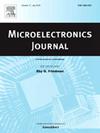Anti-machine-learning-attack strong PUF design based on multi-path delay selection strategy
IF 1.9
3区 工程技术
Q3 ENGINEERING, ELECTRICAL & ELECTRONIC
引用次数: 0
Abstract
Physical unclonable functions (PUF) have significant potential for application in information security. However, strong PUFs are vulnerable to machine learning (ML) modeling attacks, which severely limit their application in device authentication. Despite a variety of resistance techniques, strong PUFs suffer from hardware cost and stability deficiencies. This study proposes an anti-machine-learning-attack strong PUF based on a multi-path delay selection strategy through research on the entropy source of a strong PUF and the delay signal selection mechanism. First, we constructed a deviation source circuit based on multiplexers to increase the diversity of the delay signal transmission paths. Second, we constructed a delay selection circuit based on the logic gates. This circuit dynamically selects the delay signals with the same transmission path in the deviation source using AND and OR gates. Subsequently, the deviation source and delay selection circuits were utilized to construct the delay module, and the interconnection module was inserted between the delay modules to achieve alternating appearances of different types of logic gates along the delay path. Finally, RS flip-flops were employed to make decisions on the bias signals with the same delay path, and the final response was output through an XOR operation. The proposed PUF was implemented on a Xilinx Artix-7 FPGA, and the prediction accuracy of the four typical ML models was below 59 % (with 500,000 challenge-response pairs as the training set). Moreover, the proposed PUF structure is scalable and exhibits better performance in terms of hardware cost and stability than existing classic structures.
基于多路径延迟选择策略的抗机器学习攻击强 PUF 设计
物理不可克隆函数(PUF)在信息安全领域有着巨大的应用潜力。然而,强 PUF 容易受到机器学习(ML)建模攻击,这严重限制了其在设备验证中的应用。尽管有多种抗击技术,但强 PUF 仍存在硬件成本和稳定性方面的缺陷。本研究通过对强 PUF 的熵源和延迟信号选择机制的研究,提出了一种基于多路径延迟选择策略的抗机器学习攻击强 PUF。首先,我们构建了基于多路复用器的偏差源电路,以增加延迟信号传输路径的多样性。其次,我们构建了基于逻辑门的延迟选择电路。该电路利用 AND 和 OR 门动态选择偏差源中传输路径相同的延迟信号。随后,利用偏差源和延迟选择电路构建延迟模块,并在延迟模块之间插入互连模块,以实现不同类型的逻辑门沿延迟路径交替出现。最后,利用 RS 触发器对具有相同延迟路径的偏置信号进行决策,并通过 XOR 运算输出最终响应。所提出的 PUF 是在 Xilinx Artix-7 FPGA 上实现的,四个典型 ML 模型的预测准确率低于 59%(以 500,000 个挑战-响应对作为训练集)。此外,与现有的经典结构相比,所提出的 PUF 结构具有可扩展性,并在硬件成本和稳定性方面表现出更好的性能。
本文章由计算机程序翻译,如有差异,请以英文原文为准。
求助全文
约1分钟内获得全文
求助全文
来源期刊

Microelectronics Journal
工程技术-工程:电子与电气
CiteScore
4.00
自引率
27.30%
发文量
222
审稿时长
43 days
期刊介绍:
Published since 1969, the Microelectronics Journal is an international forum for the dissemination of research and applications of microelectronic systems, circuits, and emerging technologies. Papers published in the Microelectronics Journal have undergone peer review to ensure originality, relevance, and timeliness. The journal thus provides a worldwide, regular, and comprehensive update on microelectronic circuits and systems.
The Microelectronics Journal invites papers describing significant research and applications in all of the areas listed below. Comprehensive review/survey papers covering recent developments will also be considered. The Microelectronics Journal covers circuits and systems. This topic includes but is not limited to: Analog, digital, mixed, and RF circuits and related design methodologies; Logic, architectural, and system level synthesis; Testing, design for testability, built-in self-test; Area, power, and thermal analysis and design; Mixed-domain simulation and design; Embedded systems; Non-von Neumann computing and related technologies and circuits; Design and test of high complexity systems integration; SoC, NoC, SIP, and NIP design and test; 3-D integration design and analysis; Emerging device technologies and circuits, such as FinFETs, SETs, spintronics, SFQ, MTJ, etc.
Application aspects such as signal and image processing including circuits for cryptography, sensors, and actuators including sensor networks, reliability and quality issues, and economic models are also welcome.
 求助内容:
求助内容: 应助结果提醒方式:
应助结果提醒方式:


